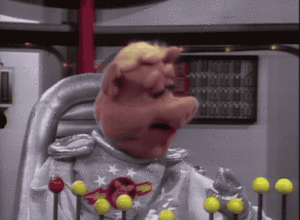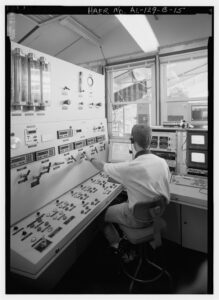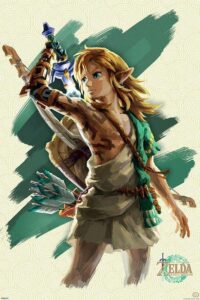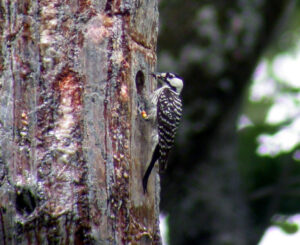calsfoundation@cals.org
The EOA’s Project Zelda
I wanted to call it Project Hogthrob after Link Hogthrob of The Muppet Show, but I was outvoted. Instead, it was named Project Zelda.
 This has been something with which we have been preoccupied of late, a project that involves revisiting every single entry we have on the CALS Encyclopedia of Arkansas. And I hope you’ll forgive me getting into a little bit of the technical side of this project, but I think that it will help you understand some of the work that goes on behind the scenes and see how we are constantly working on not just adding to the EOA but improving existing entries.
This has been something with which we have been preoccupied of late, a project that involves revisiting every single entry we have on the CALS Encyclopedia of Arkansas. And I hope you’ll forgive me getting into a little bit of the technical side of this project, but I think that it will help you understand some of the work that goes on behind the scenes and see how we are constantly working on not just adding to the EOA but improving existing entries.
Our original website, designed by Little Rock–based Aristotle, generated URLs in a custom manner based upon the entry ID number drawn from our FileMaker Pro database. In fact, each entry had two different URLs depending upon whether you arrived at it via a search or via a browse. Consequently, through the years, internal hyperlinks could manifest two different ways, depending upon who was doing the linking, but as long as we remained with the old design, that was not an issue.
However, switching over to WordPress several years back complicated things. WordPress as a platform generates URLs in an entirely different manner depending upon a field called the “post title.” So all of our entries had new URLs, but the body of said entries initially linked to the old ones. Our developer put in a component to redirect each to the new one, but given that these original URLs could take two different forms, and that the redirect relied upon a one-to-one correspondence, sometimes the redirect did not work, leaving links broken.
Adding to this, the transition resulted in us losing all of the sidebar links that had been part of the original site, as those links were generated in a custom manner.
With our second website overhaul, the internal URLs were simply updated to the newer form, thus obviating the need for a redirect. But we still had a lot of hyperlinks that were to corrupted URLs, or just links that got dropped in the transition from one platform to another. Thus, in order to fix this, we have been revisiting our older entries, starting with those uploaded back in 2006 when the EOA launched, and touching them up.

First, Jasmine Jobe, our editorial assistant, goes through each entry to check the links that are there and ensure that they function. Second, either Ali Welky, who is our associate editor, or I go through them and give them a close reading, keeping an eye out for links that should be there (either those links that got dropped or links we simply failed to make as they EOA kept growing). We put those in, add sidebar links, and maybe even touch up the entry content if need be (it can be easy for entries to go out of date).
In other words, we’ve been obsessively doing a lot of linking these days, which is why I wanted to call this effort Project Hogthrob. But the phrase “Project Zelda” just sounds better, I have been informed. (The reference is to a video game series whose hero is named Link. Maybe you already know this. I grew up playing Zork.)
Whatever the project title, we all feel that the internal links constitute one of the best features of the EOA. (For example, our entry on birds has links in it to the red-cockaded woodpecker, John James Audubon, and any number of other related subjects.) There are other state and local encyclopedias that do not so robustly offer links to their other entries, and some that have no internal links at all. Having put myself through some basic online training about analytics and search engine optimization (SEO), I know that material shows up more highly ranked in users’ search results when it comes from a site that has robust internal linking, in addition to linking to reputable websites, and being linked from them.
But that’s not the only reason. We want to make it as easy as possible for all our users to find what they need. It would be annoying to see a specific name in an entry and have to return to the search box to see if the website contains information about that person or place or thing. The more we link, the greater the utility the EOA has for users. Plus, you may well be surprised at some of the connections these various subjects actually have.
This is tedious work, though—carefully reading each entry, creating those links. Ali and I have been at our part for several weeks now and, as of this writing, only have a little more than 300 done (out of more than 7,000 entries…), because as we do this, we are still trying to process new entries and continuing to update material already online, in addition to the usual array of “other duties as assigned” that come with working in a library system. But this is probably one of the most important projects we have going right now, and we’ll keep chipping away at it as we can. Putting new material online is important. But the more we produce, the more crucial it becomes to maintain older material.
Each of these hyperlinks offers a chance to explore some new and perhaps unexpected world. Just like Link Hogthrob did on the spaceship Swine Trek.
By Guy Lancaster, editor of the CALS Encyclopedia of Arkansas




